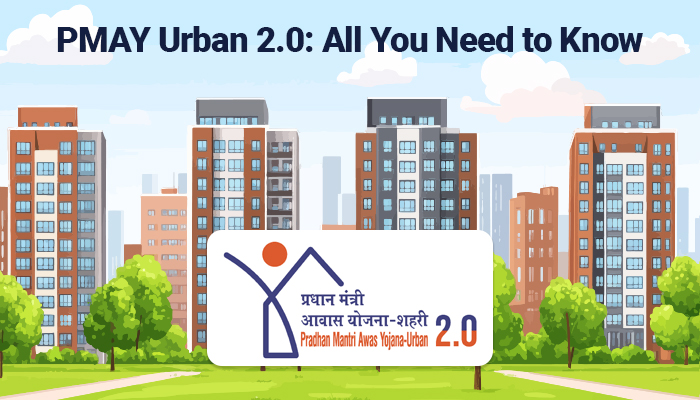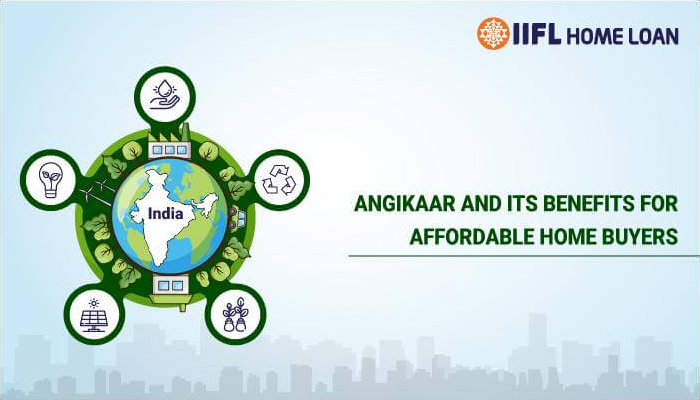Budget 2024: Pradhan Mantri Awas Yojana Receives ₹10 Lakh Crore Boost

In a bold move to address the housing needs of the urban poor and middle class, the Union Finance Minister, Nirmala Sitharaman, has announced a significant initiative under the Pradhan Mantri Awas Yojana Urban 2.0 (PMAY-U) and Pradhan Mantri Awas Yojana Gramin. This plan, part of the Union Budget 2024, promises an infusion of ₹10 lakh crore over the next five years, aiming for major enhancements in the urban housing scheme and infrastructure.
Key Features of PMAY Urban 2.0
- Enhanced Budget Allocation: The PMAY-U has been allocated ₹30,170 crore for the year 2024-25, marking a significant increase of 20.19% from the previous fiscal year. This increased budgetary allocation reflects the government's commitment to more efficient and expansive housing for all urban solutions.
- Credit-Linked Subsidy Scheme (CLSS): As a part of the Union Budget 2024, the government has revitalised the CLSS with a dedicated fund of ₹4,000 crore. The scheme, known for facilitating home ownership through affordable financing, has been a cornerstone in making housing accessible for economically weaker sections (EWS) and lower-income groups (LIG), with budget 2024 aiming to extend its benefits to the middle-income group as well.
- Focus on Urban Poor and Middle-Class Families: The Union Minister articulated that the revamped PMAY-U 2.0 would address the housing requirements of one crore urban poor and middle-class families. The plan includes a comprehensive ₹2.2 lakh crore assistance projected for the next five years, aiming to boost the creation and improvement of urban housing. According to the budget allocation, the construction of 3 crore additional houses will be facilitated, with 2 crore of these houses planned for rural areas under the Pradhan Mantri Awas Yojana Gramin.
- Substantial Subsidies and Investments: A significant highlight from budget summary 2024 was the ₹2.2 lakh crore earmarked for Pradhan Mantri Awas Yojana housing for all urban initiatives. Such fiscal support is expected to invigorate the housing finance sector and propel the demand for residential properties. The National Housing Bank (NHB) has already disbursed ₹49,460.1 crore in subsidies, benefitting over 21.1 lakh households.
- Strategic Development Initiatives: The government plans to enable creative brownfield redevelopment and establish 'Cities as Growth Hubs.' This involves setting up Transit Oriented Development plans for 14 large cities, indicating a strategic move towards integrating housing development with broader urban planning and infrastructure expansion.
Implications and Future Prospects
The massive financial injection into Pradhan Mantri Awas Yojana 2024 is a clear indicator of the government's resolve to not just tackle the urban housing crisis but also to stimulate economic growth through infrastructural development. The initiative is set to benefit a wide demographic, encompassing the urban poor to the middle-income earners, and is expected to catalyze a series of positive economic and social outcomes.
With these plans, the government not only aims to improve the living standards of millions but also to foster more organized and sustainable urban growth. The focus on integrating housing with urban planning is a forward-thinking approach that could serve as a model for future development projects across the globe.
As PMAY-U enters its next phase, the success of these initiatives will depend on meticulous implementation and continuous monitoring to ensure that the objectives of affordable housing and urban transformation are achieved effectively.
Shifts in Real Estate Taxation
Budget 2024 introduces significant changes in taxation affecting home loans and investment strategies. The most notable change in this budget highlights 2024 is the removal of the indexation benefit for calculating long-term capital gains (LTCG) on non-financial assets, including property.
- Tax Rate Adjustment: The LTCG tax rate has been reduced to 12.5% from the previous 20%. This reduction is aimed at rationalising the capital gains tax across all financial and non-financial assets, promoting a more uniform tax landscape.
- Indexation Benefit: The government's decision to remove the indexation benefit means that the real gain after adjusting for inflation will no longer be considered for tax purposes, which could potentially lead to higher taxable amounts, particularly affecting those investments with shorter holding periods or moderate price appreciation (less than 10% per annum).
- Short-Term Capital Gains: The tax rate for short-term capital gains (STCG) remains unchanged at 20%. This stability ensures that short-term investment strategies are not further discouraged by increased tax burdens, maintaining a consistent approach amidst the broader tax reforms introduced in budget highlights 2024.
Geographic Variances and Market Impact
The impact of these taxation changes will vary significantly across different regions:
- End-User Markets: Cities like Bengaluru, Hyderabad, and Pune, which are predominantly driven by end-users, are expected to be less impacted due to the stable demand in these areas.
- Investor-Heavy Markets: In contrast, markets like the National Capital Region (NCR) and Mumbai, known for their robust investor activities and higher property appreciation rates, might face a more pronounced impact. This change could dampen the investment appeal in these regions, potentially leading to a slowdown in speculative buying.
As home loans continue to be a critical factor for urban real estate investment, these changes will necessitate a recalibration of strategies, especially in supporting housing for all urban initiatives across varied geographic landscapes.
Road Ahead
While the budget highlights 2024 have elicited mixed reactions, the overarching objective is to stimulate housing demand and align tax policies with broader economic goals. This includes significant initiatives under both Pradhan Mantri Awas Yojana 2024 for urban development and Pradhan Mantri Awas Yojana Gramin for rural housing improvements.
Stakeholders in the real estate market will need to recalibrate their investment and home loan strategies, focusing on long-term growth and sustainable development in both the urban housing scheme and the Pradhan Mantri Awas Yojana housing for all urban.
As the policies detailed in the budget summary 2024 begin to take effect, their impact on shaping the future landscape of real estate in India will become increasingly apparent. This will be particularly notable in the execution and success of the Pradhan Mantri Awas Yojana 2024 initiatives, which aim to provide housing for all across diverse urban and rural communities.
Tags
Disclaimer: The information contained in this post is for general information purposes only. IIFL Home Finance Limited (including its associates and affiliates) ("the Company") assumes no liability or responsibility for any errors or omissions in the contents of this post and under no circumstances shall the Company be liable for any damage, loss, injury or disappointment, etc. suffered by any reader. All information in this post is provided "as is", with no guarantee of completeness, accuracy, timeliness, or of the results, etc. obtained from the use of this information, and without warranty of any kind, express or implied, including, but not limited to warranties of performance, merchantability, and fitness for a particular purpose. Given the changing nature of laws, rules, and regulations, there may be delays, omissions, or inaccuracies in the information contained in this post. The information on this post is provided with the understanding that the Company is not herein engaged in rendering legal, accounting, tax, or other professional advice and services. As such, it should not be used as a substitute for consultation with professional accounting, tax, legal or other competent advisers. This post may contain views and opinions which are those of the authors and do not necessarily reflect the official policy or position of any other agency or organization. This post may also contain links to external websites that are not provided or maintained by or in any way affiliated with the Company and the Company does not guarantee the accuracy, relevance, timeliness, or completeness of any information on these external websites. Any/ all (Home/ Loan Against Property/ Secured Business Loan/ Balance Transfer/ Home Improvement Loan/ NRI Home Loan/ Home Loan for Uniformed Services) loan product specifications and information that may be stated in this post are subject to change from time to time, readers are advised to reach out to the Company for current specifications of the said (Home/ Loan Against Property/ Secured Business Loan/ Balance Transfer/ Home Improvement Loan/ NRI Home Loan/ Home Loan for Uniformed Services) loan.
 Login
Login






















